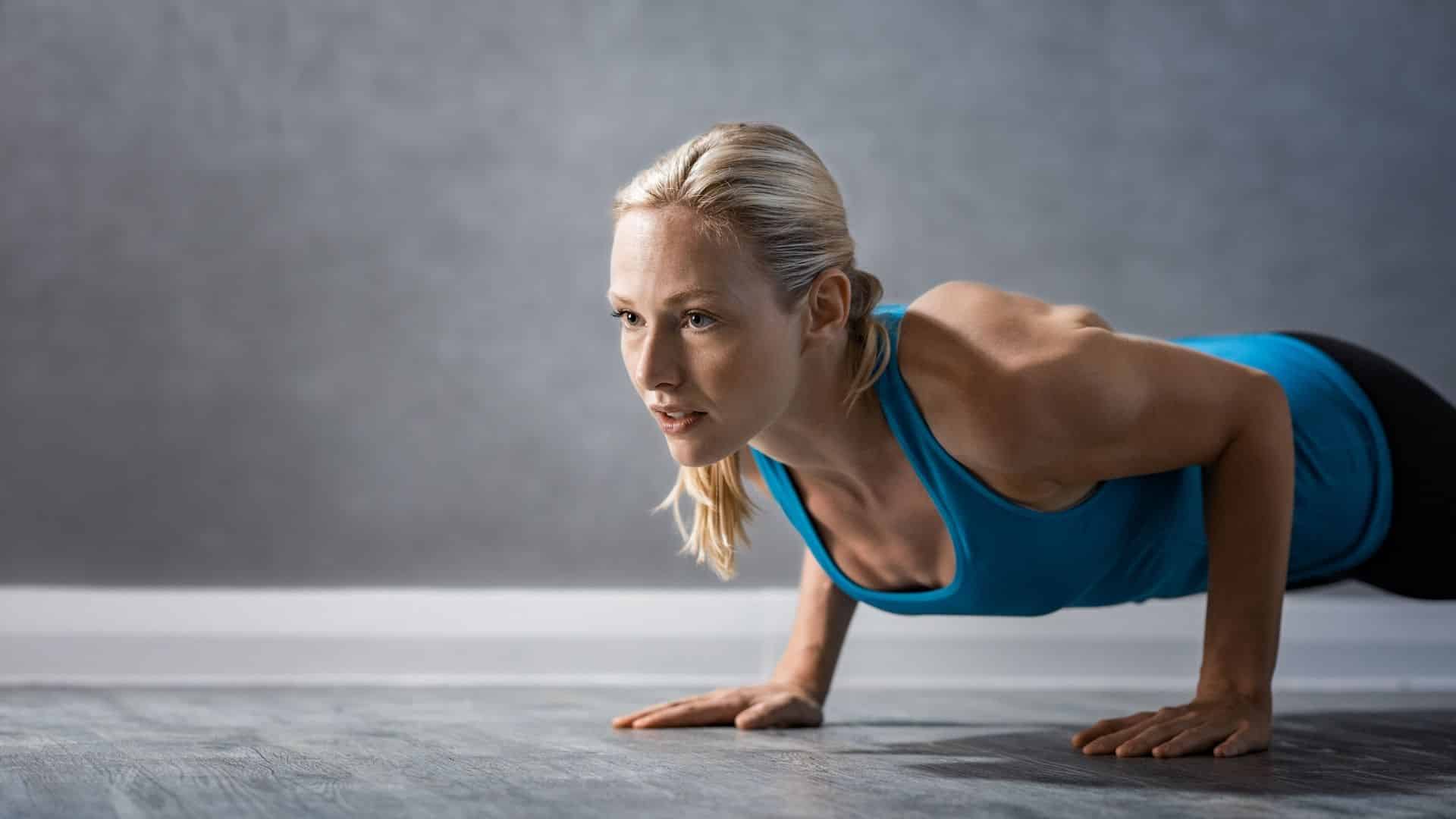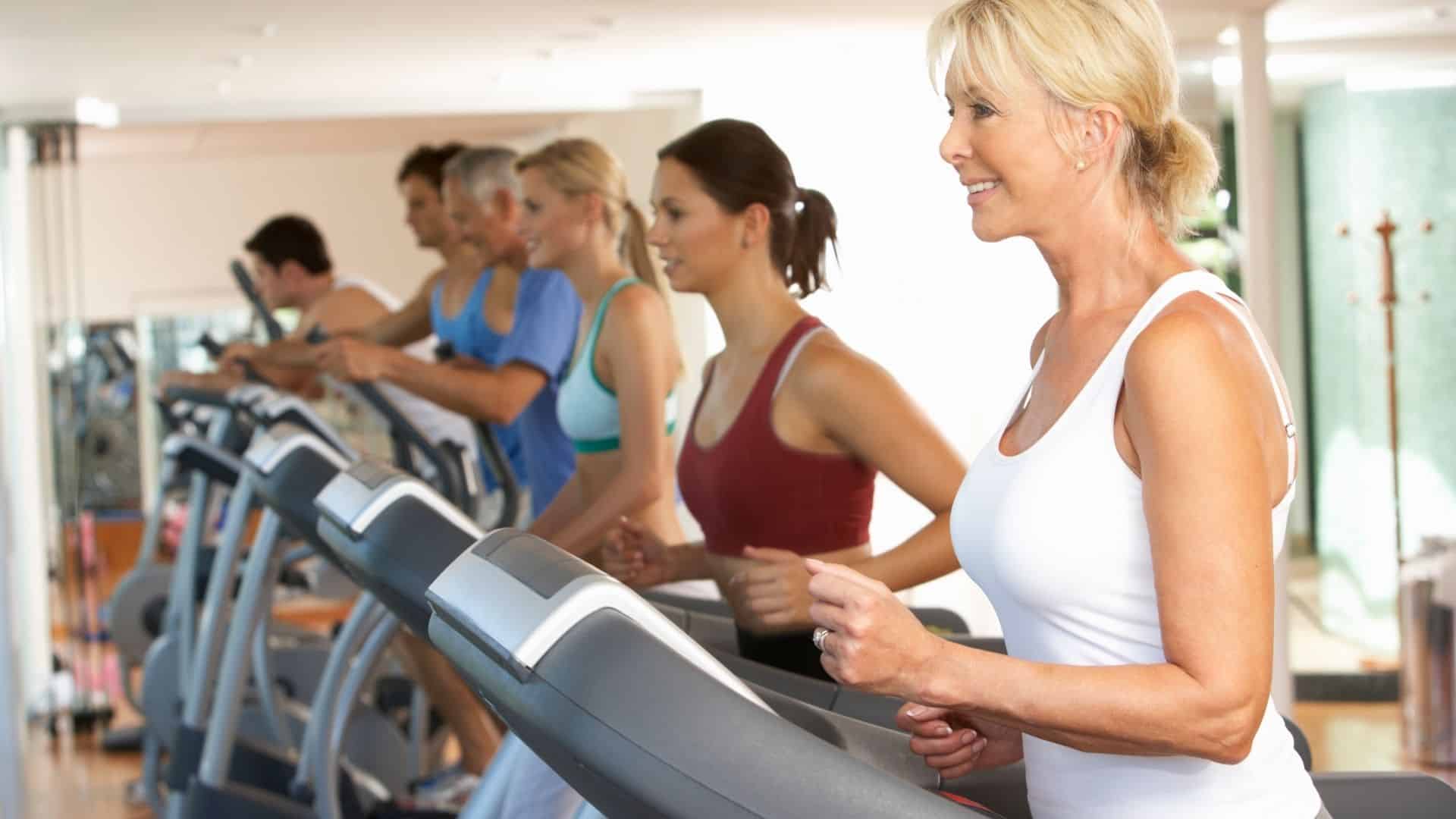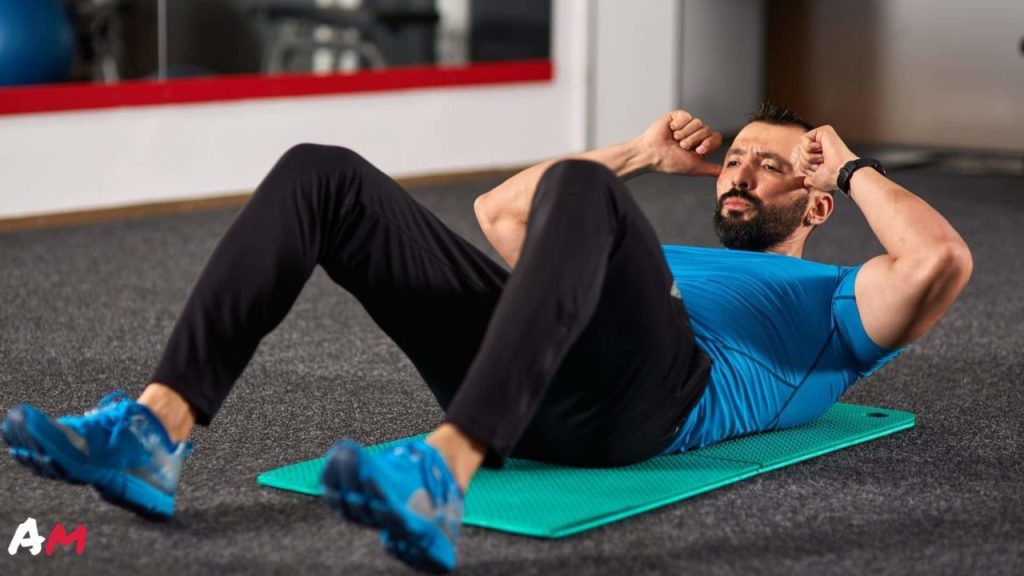Exercise in every stage of life is beneficial for one’s health. However, as we age, it is important to optimize our workout in order to ensure the best function and prevent injury.
After the age of 40 our joints start to lose some of their natural lubrication, and bones begin the process of becoming more porous. This means that our joints have more load being put through them, which can cause more aggravation and pain.
This is especially true of women as they enter menopause and their estrogen levels drop. Once these hormonal changes occur, the risk of osteoporosis, high cholesterol, high blood pressure, and weight gain increases.
As we age, physical activity should be low impact and functional, as well as preventative. A workout should be designed with the natural aging processes in mind, but should still include resistance training to build muscle strength and cardio to promote a healthy heart.
What’s In This Guide?
Four worst exercises for people over 40
Instead of Crunches, do Planks, Pilates Curl-ups, or Pilates Hundreds
Instead of Leg Extensions do body-weight squat or lunges
Instead of Tricep Dips do Tricep Push Ups or Elbow Extension with weights
Instead of Sprints do moderate aerobic exercise
Benefits of Exercise for People Over 40
Four worst exercises for people over 40
Here are four exercises to avoid after 40.
Crunches
Crunches are not an optimal exercise at any age, as it strains both our necks and low backs. As we age, the mobility of our joints decreases, and we have a reduced ability for load transfer and shock absorption in our low back and neck.
A crunch creates a lot of pressure and shear in the most vulnerable joints in our back, those in our lower lumbar spine. Even this exercise is enough to cause aggravation in our low backs, but some trainers still promote doing a crunch with a weight in our hands or on our chests!
A crunch is not the only way to tackle belly fat, and should be replaced with gentler ab exercises that promote more functional strength.
Read Also: Effective Core Exercises for Older Adults
Instead of Crunches, do Planks, Pilates Curl-ups, or Pilates Hundreds
A core exercise program shouldn’t hurt our necks- try doing a plank, a pilates curl-up, or pilates hundreds as all of these exercises keep your spine and neck in a neutral alignment.
A neutral spinal alignment is best for preventing low back pain and injury. It is also more functional, as strengthening in this range helps promote a better standing and sitting posture in our day to day lives.
Also Read: Back Strengthening Exercises For Seniors

Leg Extensions
Leg extension machines at the gym do more harm than good, and should be avoided by anyone with a history of knee issues.
This is particularly true of men or women who are entering the early stages of osteoarthritis. This exercise causes joint pain and strain on one’s knees even with a small amount of weight, and is not functional- you are much better off gaining muscle mass in your leg muscles by exercising with both feet flat on the ground, also known as “closed kinetic chain”.
Read Also: Physiotherapist recommended Ice Pack Wraps for common injuries
Instead of Leg Extensions do body-weight squat or lunges
A body-weight squat or lunge is a safer, and less aggravating exercise for your thigh and glute muscles, and is still a killer workout routine. Don’t listen to those who claim that the squat is an exercise that should be avoided after 40- after all, we squat every single time we go to sit down into a chair!
If we do not perform this movement regularly, we will be at an increased risk of falls and injury as we age.
Also Read: 10 Best Resistance Band Exercises For Seniors

Tricep Dips
Preventing injury is an important consideration as we age, but sometimes our workout can be the culprit of our pain.
When we are older, it takes more time for our tendons, muscles, and ligaments to repair themselves, which means that a workout that is too intense could cause more harm than good. Our rotator cuff is very susceptible to micro tearing, tendonitis, or inflammation.
For this reason, it is best to avoid tricep dips on the bar at the gym, as this puts our entire body-weight at the mercy of these little stabilizer muscles in our shoulders.
Read Also: How Woman can Build Muscle After 40
Instead of Tricep Dips do Tricep Push Ups or Elbow Extension with weights
A better alternative is a tricep push up or elbow extension with a light free weight. These upper body muscles are an important group to strengthen in our workout routines as they are integral in lifting, but we have to be careful to not overdo it!
Read Also: The Best Power Lifting Routines For Over 50

Sprint Training
A cardio workout is an important component of any balanced exercise routine. As we age, both our reaction time and the speed at which our muscles activate slows.
Combine this fact with diminishing bone density, loss of muscle mass, and a higher probability for joint pain, and we can see why a sprint training workout should best be avoided- running at such fast speeds has the potential to aggravate our lower body.
It can particularly aggravate our knees, which absorb a lot of the load from our body weight.
Read Also: The ultimate guide to shoulder workouts for women
Instead of Sprints do moderate aerobic exercise
Cardiovascular exercise at a moderate intensity, such as speed walking, tai chi, or Qi Gong gives all the same benefits and still elevates our heart rate, so high intensity sprint training is not worth the risk of injury.
Sprinting may give you an endorphin high, but the pain that you experience after the workout is finished could be pretty intense. It is best to do moderate aerobic exercise instead- believe us, your knees will thank you!
Also Read: 8 Treadmill Workouts for Beginners and Weight Loss

Benefits of Exercise for People Over 40
Exercising at any age has the same main benefits: it improves our cardiovascular health, helps maintain our weight, improves our endorphin and regulates our cortisol levels, and increases our strength and endurance.
As we age, physical activity becomes more about optimizing our function so that we can live a long and independent life. Exercise prevents the emergence of chronic health problems such as high cholesterol, high blood pressure, heart disease, and obesity.
Read Also: Intermittent fasting for women over 50 – Is it right for you?
It helps regulate blood sugar levels which prevent the emergence of diabetes. Exercise reduces cortisol levels, which is the hormone that is secreted when we are experiencing high levels of stress.
Weight loss can allow less stress to be placed on our joints as body fat decreases, which will prevent injury in the long term.
Maintaining lean muscle mass and bone density are important considerations for the aging population, as osteoporosis puts individuals at an increased risk of bone fractures.
Read Also: Strength Training For Women Over The Age of 60
Any exercise routine should be holistic and functional, and weight loss should be a secondary consideration as compared to the benefits of exercise for our entire system.

